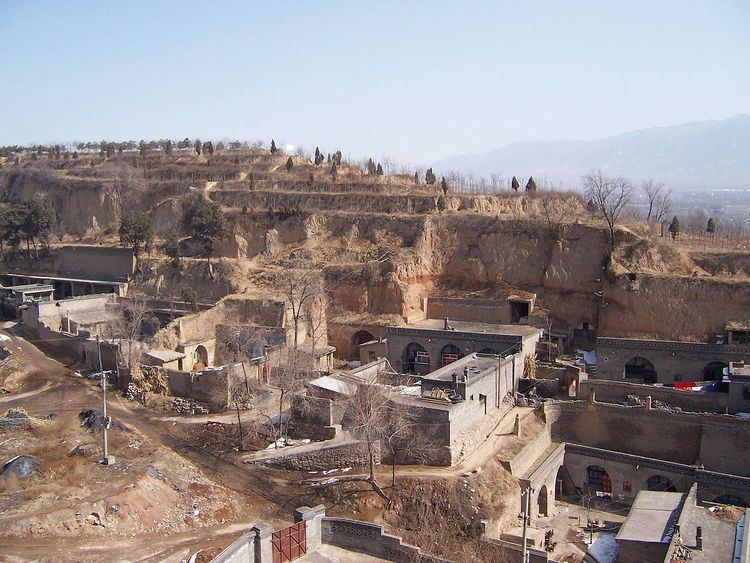 | ||
A yaodong (Chinese: 窯洞; pinyin: yáodòng) or "house cave" is a particular form of earth shelter dwelling common in the Loess Plateau in China's north. They are generally carved out of a hillside or excavated horizontally from a central "sunken courtyard".
Contents
The earth that surrounds the indoor space serves as an effective insulator keeping the inside of the structure warm in cold seasons and cool in hot seasons. Consequently, very little heating is required in winter, and in summer, it is as cool as an air-conditioned room.
The history of yaodongs goes back centuries, and they continue to be used. In 2006, an estimated 40 million people in northern China lived in yaodongs.
In the last decade, yaodongs have been brought to the attention of scientists and researchers. These traditional dwellings have been regarded as an example of sustainable design.
Types
There are two types of underground yaodong:
Where the construction of underground yaodong is no longer allowed, there are also yaodong built wholly or partially outdoors, with an arched structure inspired by the underground dwellings. The new vaulted adobe homes of this type are now common among farmers in the area.
More elaborate yaodongs may have a façade built with stones with fine patterns carved on the surface. Yaodongs can also be constructed with stones or bricks as stand-alone structures. The inside walls are usually plastered with lime to make them white.
Origins
The first type of yaodong were underground dwellings that date back to the 2nd millennium BC, China's Bronze Age, and according to Chinese tradition, the Xia Dynasty. Chinese scholars generally believe that this type of habitat has developed mainly from the Han dynasty (206 BC to 220 AD), along with a progressive improvement of construction techniques to the dynasties Sui (581 to 618) and Tang (618 to 907). But it is during the dynasties Ming (1368 to 1644) and Qing (1644 to 1912) that the pace of construction reached its peak.
Geographic distribution
The yaodong homes are common on the Loess Plateau of China in the North and are found mainly in four provinces: Gansu, Shanxi, Henan, and the Hui Autonomous Region of Ningxia.
In the Qingyang region especially, the ratio of cave dwellers to non-cave dwellers is the highest found anywhere in China.
Notable examples
Approximately 810,000 people died in collapsed yaodongs in the 1556 Shaanxi earthquake.
The most famous yaodongs in China are perhaps those in Yan'an. The communists led by Mao Zedong headquartered there in 1935–1948 and lived in yaodongs. Edgar Snow visited Mao and his party in Yan'an and wrote Red Star Over China.
